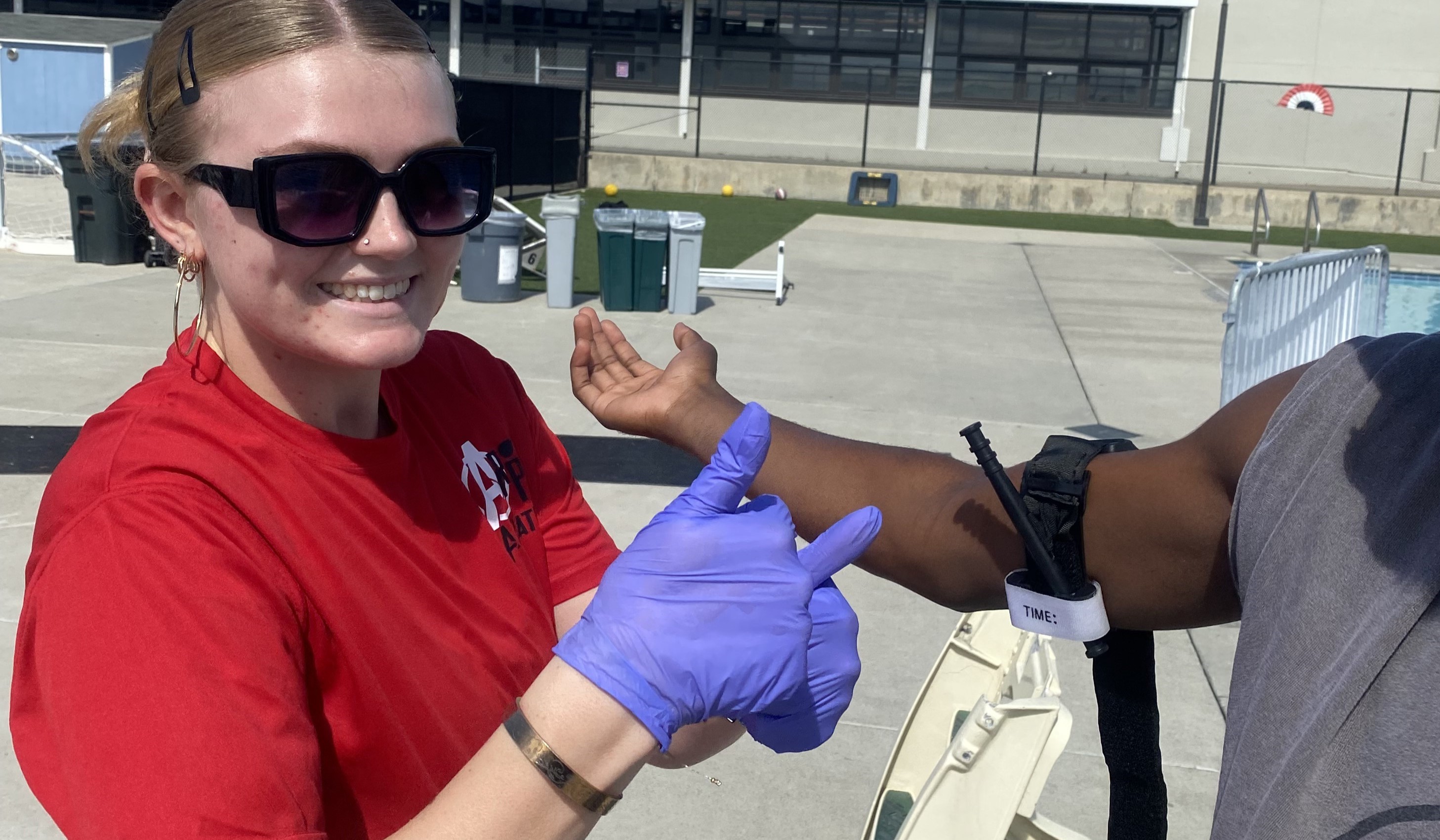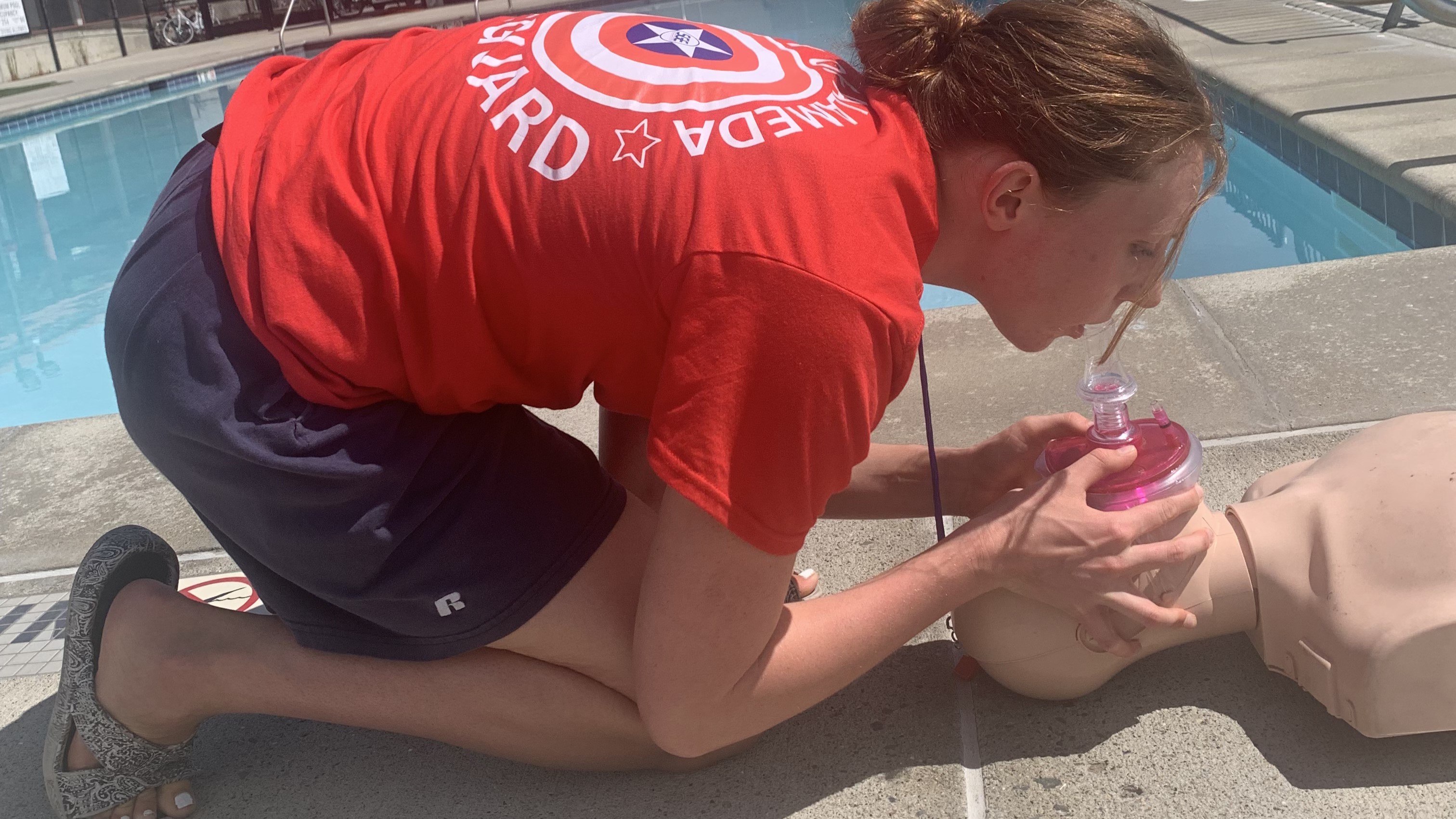As aquatics professionals, we know that early CPR, defibrillation and access to EMS saves lives. We also know that our employees need certifications as one item of proof for verification of their knowledge and skill sets.
But within the last eight to 10 years, a disturbing practice has spread in popularity: More and more agencies have started issuing two-year certifications in CPR training.
We believe this risks lives. It is a potentially dangerous practice that doesn’t mesh with real-world practicalities. When we talk to other instructors, they’re just as mystified as we are.
Not worth the risk
We have the duty to ask why certification agencies would change to a two-year certification.
The certification length contradicts multiple study’s findings and seems completely inappropriate. There is a long history of studies showing that even one year is too long for the majority of the population to go between recertification training. There are at least 10 studies between 1983 and 2007 that seem to demonstrate a serious loss of CPR skills within one year of training. And it wasn’t just lay responders: These studies included 852 lay responders, 124 professional rescuers, 61 medical students, 17 nurses and 21 physicians.
In the most recent study, performed in 2004 (Woollard, Whitfield, Smith, Colquhoun, Newcombe, Vetter and Chamberlain), 112 trainees were tested before and after a four-hour class. After six months passed, 76 were reassessed. This study found that all skills except compression rates deteriorated in that timeframe.
Real-world observation also would contradict the two-year window. Many employers still believe that a certification card provides sufficient proof of knowledge and skills. But those of us who have conducted rigorous pre-employment testing know this is false: Most applicants cannot demonstrate skills to the accepted certification standards.
Speaking from a combined total of 50-plus years of life-saving teaching experience, we have identified a few trends. In thousands of CPR pre-employment tests, challenges and review courses, only a very small percentage — approximately 2 to 3% — have the requisite skills and knowledge to successfully complete a CPR challenge. Even students who had recently completed a CPR course rarely held sufficient skills and knowledge to pass the testing.
We’ve always been a big advocate of performing employment testing, where potential lifeguards show that they can swim and conduct rescues they should have learned in their certification training. This includes CPR and first-aid skills. If they performed to the certification standard, they moved on to the next tier of interviews. If they didn’t, we had to take them out of the running. So as an employer, a shorter certification period seems to make more sense, because you want the confidence that employees can perform to a competent level.
To exacerbate this situation, most students who participate in testing falsely believe their proficiency is sufficient to successfully complete certification requirements. For recertification, I don’t know how many times we’ve had people come in to test out in CPR and say, “Oh, I already know this material. I want to do a challenge.” And it always surprised us how few people could perform the practical skills — and a significant number couldn’t even pass the written test. This clearly shows that knowledge and skills are missing.
Many professionals find it difficult to stay current with the changes that are passed by training organizations when they update their standards every five years. This begs the question of how non-professionals keep up to date.
Differences between lay responder and professional rescuer skills further muddy the waters with facilities and even lifeguards, as they don’t understand the differences in the level of training. Plenty of people who work in field assume all CPR certifications are alike. But that is not the case: You have a Lay Responder (compression only) level with as little as Adult CPR. But when you look at the Professional Rescuer CPR or, as some agencies call it, Health Care Provider CPR, they require a higher level of care that requires rescue breathing, CPR for adult, child and infant, and two rescuer skills with the use of specialized equipment.
All these realities would seem to suggest that CPR certifications should require renewal every 12 months at the longest. In fact, just from looking at the majority of available information, one could make a very strong argument for recertifying twice yearly to make up for the skill loss. The knowledge retention is not there.
Inherent validation
It appears that training agencies often rationalize that the employer is responsible for audits and retraining, thus waiving responsibility. We surmise that the training organizations see this as justification for a longer certification period.
This argument doesn’t really hold up. The certification is what employers look for — not additional training records from previous employers. The agencies set criteria to certify individuals in course content knowledge. Employers recognize the certification as a valuable method to help determine minimum knowledge and abilities. Why else would they often list the certifications in job announcements?
As such, training agencies should consider a change in the way they measure students — for example, a six-month certification period for first-time students is much more appropriate. Conversely, a student who has taken the course 10 times may well have built up the competency to wait two years to test out. We often see that CPR instructors know the materials well, while new students have little retention.
So should we consider a sliding scale of certification periods based on current and past performance? Based on previous studies and the push for science-based procedures, the answer is a resounding yes.
At a moment’s notice, somebody can die under our care. Why would we chance that? Our whole mission is saving lives. Why wouldn’t we do what research and real-life observation tell us?
Supporting studies
• McKenna, Glendon. (1985) “Occupational first aid training: Decay in cardiopulmonary resuscitation (CPR) skills.”
• Wilson, Brooks, Tweed. (1983) “CPR skills retention of lay basic rescuers.”
• Fossel, Kiskaddon, Sternbach. (1983) “Retention of cardiopulmonary resuscitation skills by medical students.”
• Glendon, McKenna, Hunt, Blaylock (1988) “Variables affecting cardiopulmonary resuscitation skill decay.”
• Berden, Bierens, Willems, Hendrick, Pijls, Knape. (1994) “Resuscitation skills of lay public after recent training.”
• Kaye, Mancini. (1986) “Retention of cardiopulmonary resuscitation skills by physicians, registered nurses, and the general public.”
• Kaye, Rallis, Mancini, Linhares, Angell, Donovan, Zajano, Finger. (1991) “The problem of poor retention of cardiopulmonary resuscitation skills may lie with the instructor, not the learner or the curriculum.”
• Chamberlain, Smith, Woollard, Colquhoun, Handley, Leaves, Kern. (2002) “Trials of teaching methods in basic life support (3): Comparison of simulated CPR performance after first training and at 6 months, with a note on the value of re-training.”
• Woollard, Whitfield, Smith, Colquhoun, Newcombe, Vetter, Chamberlain. (2004) “Skill acquisition and retention in automated external defibrillator (AED) use and CPR by lay responders: a prospective study.”
• Einspruch, Lynch, Aufderheide, Nichol, Becker. (2007) “Retention of CPR skills learned in a traditional AHA Heartsaver course versus 30 minute video self training: A controlled randomized study.”



